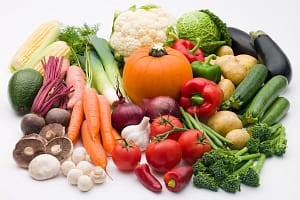The food industry has embraced peptides. It is becoming more popular in functional food, special-purpose food, and health food. Peptides of many kinds have also been discovered. Synthetic peptides and plant peptides should be the most widely available peptides now. Bioactive peptides are produced enzymatically from plant and animal tissues; plant peptides and animal peptides are often employed in food and medicine. This biological enzymatic hydrolysis technique works on the same basis as our body’s degradation process for food. The human body usually breaks down food into tiny molecular peptides, which it then absorbs and uses. To help the human body, small molecule peptides produce the chemicals, peptides, and significant molecule proteins it needs. There is no need for the human body to digest small-molecule peptides since they may be immediately absorbed and used by the body without digestion. This peptide is very permeable and will be transported to damaged or sick cells to restore their tissues and functions and strengthen their immune system. A healthy person doesn’t become ill because they don’t have enough active peptides in their body. This stage is where medications are very fundamental.
Peptides made from synthetic materials
There are several types of synthetic peptides, and they are employed in medicine often. This classification means that peptides have a particular purpose, are produced with that function in mind, and are only suited for a specific population. Insulin (a 51-peptide artificial protein) may be created using this approach. For diabetics, this is the medication.
To sustain life, we must be able to synthesize peptides in our bodies. Because of peptides, cells might age and lose their ability to perform their functions. Imagine what life would be like if your cells stopped functioning. To distinguish between animal and plant peptides, we must first distinguish between animal and plant proteins. On synthetic peptides, if you are a researcher interested in these compounds, you can find peptides for sale in USA for research purposes only.
Comparison of animal and plant proteins
Aside from the nature and amount of amino acids, there is no difference between plant and animal protein in terms of necessary amino acids. Plant protein has a wider variety of sources than animal protein, with a smaller variety of sources. In addition, processing costs are low, and technology is simple. When it comes to animal and plant protein, there is a notable difference: Plant protein, since it is made from plants, lacks immunoglobulins and lysine, and its absorption is more complex than that of animal protein, which is more readily absorbed by the human body. The fibrous barrier that surrounds plant protein makes it harder to digest.
An animal peptide’s positive qualities
More precise aiming. Different organs of animals include a variety of small-molecule active peptides, each with a unique set of characteristics. Active peptides in the heart, for example, primarily influence the heart, while active peptides in the lungs mainly affect the lungs. In addition, specific organs of animals, such as the heart, liver, and bone marrow, preferentially concentrate different trace elements, such as cobalt and zinc, iron, calcium, and magnesium. Since there is so much similarity between animal and human genes (for example, pig genes are 90 percent identical to human genes), animal organs contain almost all of the active peptides and trace elements found in human genes. Because they are derived from animal organs, active peptides derived from those organs will only act on the corresponding body parts in the human body and play a function.
Benefits of peptides from plants
Every living thing is made up of cells, and each one has a particular structural and functional purpose. The cell membrane’s selective permeability effect maintains a relatively consistent environment inside the cell, making it semi-permeable between the cell and the extracellular environment. Despite its vital role in cell survival and function, the phospholipid bilayer impedes the exchange of chemicals between cells. A deficiency in cellular nutrition may lead to various health issues, such as cardiovascular disease, diabetes, and cancer. According to recent studies, some amino acids are absorbed as free amino acids, but the majority are absorbed as tiny peptides following digestion by digestive enzymes in the digestive system. It was later shown that “small molecule peptides do not need to be digested while passing through the human digestive system, but may be immediately absorbed and used by the human body, and have specific physiological actions.”






Leave a Comment